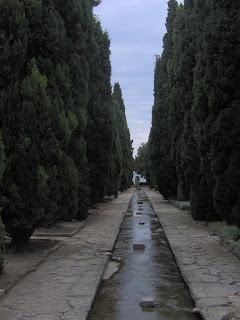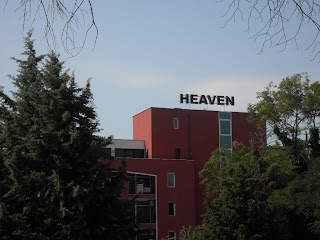This blog post has taken me about a year to gather into anything worth writing, mostly because I’ve been trying to understand the reasoning behind it for approximately that long. I’m still not too sure I understand it fully, and this post might come off as sounding very critical and/or negative. However, I feel like it’s something very important – maybe one of the most important aspects of the education system here in Bulgaria – and I think it says a lot about my work here.
When I arrived here in Preslav, I had no idea what I would be doing and only a vague sense of who I would be working with. I had some ideas, but didn’t really know how to implement them. In fact, I spent a good part of my first 6 months just feeling out the situation here and trying to understand what was happening around me. I had started some groups, mostly revolving around English, since that’s all I could really do at the time, and a math group. I had some art and sports going as well. However, there was something odd happening and I couldn’t really put my finger on it. Most of my kids were way behind in classes, yet could pretend like they were working perfectly. They would fill pages and pages of notebooks with homework that didn’t mean anything. A typical homework help session would involve me walking around the room as several children copied words from a textbook, or pretended to write notes, roughly looking like this: “alguprRDH dahduDHNNn. ..dhgaBBkd, LHDabfnk.” As you might imagine, this was somewhat alarming to me.
But it wasn’t the fact that they weren’t writing anything meaningful that was alarming to me. It wasn’t the fact that they didn’t know how to read, and it wasn’t the fact that the children didn’t know anything was wrong. Only now do I realize what was causing the sick feeling in my stomach. The supervisors, the tutors, the teachers… all of the child care workers were actively encouraging it. I slowly realized the system was not to teach children how to write, just how to make it look like they were writing.
I would ask the children what it was they were writing, and some would shrug their shoulders, some kids pointed to a random word in the textbook, and some would just flat out lie and say they were writing something that wasn’t even remotely related to anything. One child had filled a page up with nothing but his name, beautifully written in perfect cursive script, all the instances of which blurred together and connecting as if it were one long, flowing penmanship exercise.
And now I know that basically, it was.
This year, I have a somewhat deeper understanding of the situation, since I have observed the youngest kids start first grade at the beginning of the year, and have been tracking what they are up to. What I found just flat out astounded me. I had known for some time that the children here don’t learn how to read or write until they reach first grade. It had been frustrating to me to be told that I couldn’t teach the kids at the preschool some basic reading skills because of “the system” in place (I have since gone ahead and done it anyway). It wouldn’t have been as big a deal if I didn’t know the method.
In the first grade, starting about the 3rd week or so, the children start a process called “Chetichki,” roughly translated to “little readings” or something of the sort. Chetichki consist of different patterns of lines and circles, mostly meaningless, that the children are to copy over and over again until they have perfectly recreated the original pattern. The theory behind this method is to prepare the children to learn how to write actual letters and to write in nice cursive script almost immediately. I have 6 first graders that I work with in the orphanage, and all of them spent most of their homework time painstakingly copying these chetichki. If one was wrong or out of place, they would have to start over and do the pattern again. Mostly, the patterns looked very little like letters. Why the children don't skip this altogether and start by learning how to write the actual letters has just recently become clear to me. The system has been created based on appearance instead of substance.
Eventually, the children do start learning the letters of the Cyrillic alphabet. However, the method stays the same. The children are assigned pages and pages of perfect Cyrillic writing, and in the end they have something that you could hang on a wall, but nothing that has actually gotten into their minds. No development has taken place, just copying. When I ask the children what letter they have written, or what sound it makes, they mostly cannot give the correct answer.
There is a huge illiteracy problem in the orphanage. I have spent the better part of my time there teaching several children how to read their own language. In the beginning I discarded all pretentions of teaching little kids English, or catching them up in literature, or even helping as a tutor. Mostly, I have been teaching the very basics of reading and math. And what is amazing to me is that in almost every circumstance, every kid in these groups has been able to write perfectly. If this was a penmanship competition, I’m sure that one of my kids would take first place. Unfortunately it isn’t, and having perfect handwriting doesn’t mean anything if you can’t understand what it says. It seems that the best way to become literate through this system is to either pick it up the very first time before the teacher moves on to the next lesson or to have constant parental reinforcement outside of school to supplement the lessons. Often, the children at the orphanage are not afforded either opportunity. The children who do actually learn how to write are discouraged from doing so freely and creatively because they might make a mistake. Great work might be rejected because it doesn't look good.
Yet this method is perfect for the schools here. It allows them to grant very high grades to children for little work or little absorption. It allows schools to keep the same number of children in each grade so that they are granted the same amount of funding. It’s why there are 5th graders who can’t read the word “Az” (me), or who can’t identify the letter H (Cyrillic n). It’s why kids can copy pages of math tables and not be able to count to 5 properly. It’s why the achievement gap in Bulgaria is as huge as it is. Because in many instances the objective is to make it look like the kids are achieving rather than actually making sure they are.
Overall, during my time here I have realized that the real challenges in this country lie in where its leaders have placed its priorities. There’s no lack of resources, but they are going to the wrong places. There’s no lack of teaching methods, it’s that the methods aren’t working. The children leave school with the appearance of a vast library of knowledge, but no practical way to apply it. There is no shortage of teachers, but there is a shortage of passion to teach. It’s why when I ask my kids what they dream of being when they grow up, nobody says the President of Bulgaria. Almost everyone answers a taxi driver or a waitress.
It sounds dumb, but everything starts in the beginning. If the priority is to teach and have the children absorb and develop, the child will be successful. Literacy and passion for learning emerge and flourish at a young age. If the priority is to make it look like the child is working - the emphasis on appearance rather than achievement - the system has failed before it even gets off the ground.
Until next time…




























































